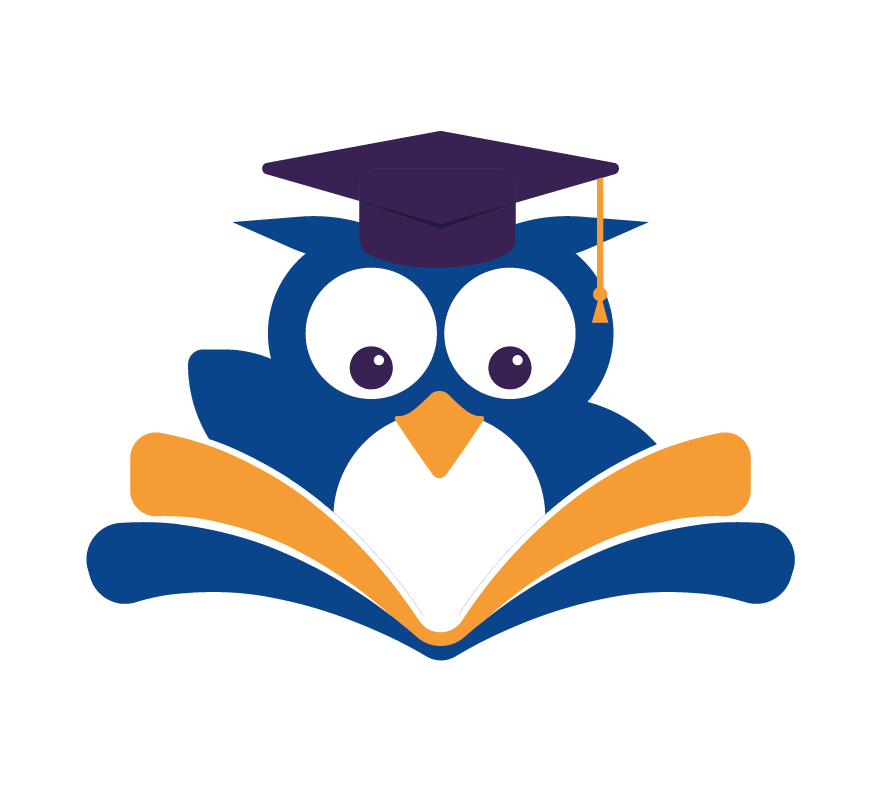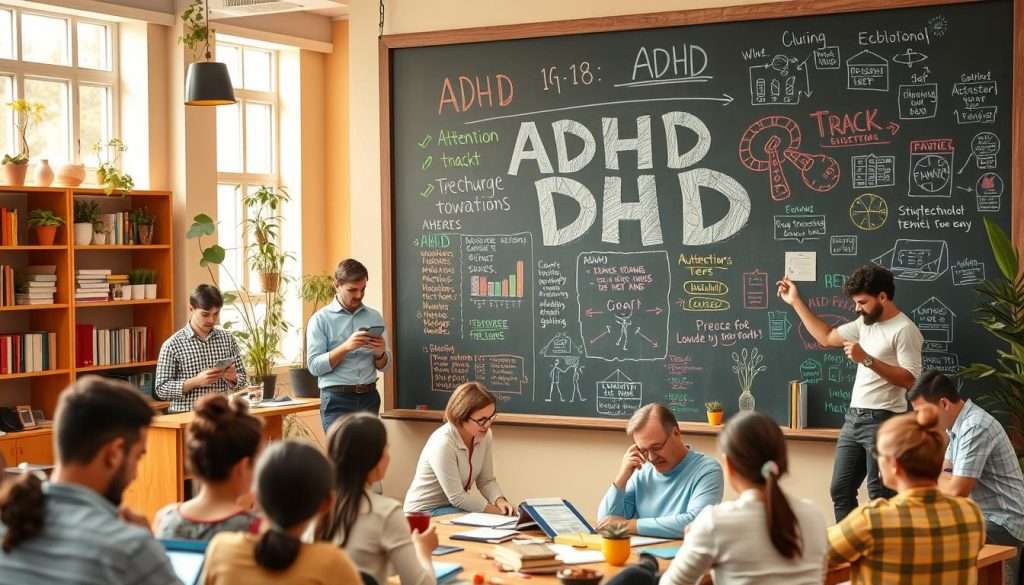“You don’t have to be great to start, but you have to start to be great.” – Zig Ziglar. For those with attention deficit disorders, starting can be tough.
Managing ADHD is hard, affecting daily life and tasks. Creating a daily list and breaking tasks into smaller steps can help a lot.
We aim to give you useful tips to boost your focus and handle attention disorders better. By the end, you’ll know how to stay on track.
Key Takeaways
- Practical strategies for managing ADHD
- Tips for improving daily focus and organization
- Techniques for breaking down large tasks into smaller steps
- Methods for creating a daily schedule that works for you
- Ways to minimize distractions and stay on track
Understanding Attention Deficit Disorders
It’s important to understand attention deficit disorders to improve focus and productivity. Attention Deficit Hyperactivity Disorder (ADHD) is a complex disorder. It includes symptoms like inattention, hyperactivity, and impulsivity.
Common Symptoms and Signs
Knowing the symptoms of attention deficit disorders is key. These symptoms include trouble focusing, not listening when spoken to, and making careless mistakes. Impulsivity is also a symptom, showing as trouble waiting or interrupting others.
Different Types of Attention Disorders
There are different types of attention deficit disorders. These include inattentive type, hyperactive-impulsive type, and combined type. Knowing the type can help in managing it better.
How Attention Problems Affect Daily Life
Attention problems can affect daily life a lot. They can make it hard to do tasks at work or school. They can also make social interactions tough due to impulsivity or inattention. It’s important to find ways to deal with these issues.
| Aspect of Life | Common Challenges | Potential Strategies |
|---|---|---|
| Work/School | Difficulty completing tasks, following instructions | Break tasks into smaller steps, use planners or apps |
| Social Interactions | Impulsivity, interrupting others, forgetfulness | Practice active listening, use reminders for social engagements |
| Daily Routine | Disorganization, forgetfulness | Establish a daily routine, use organizational tools |
How to Fix Your Attention Deficit: First Steps
Fixing your attention deficit starts with knowing your challenges. You need to find out where you struggle most. This helps you make a plan to improve your focus.
Assessing Your Specific Attention Challenges
To figure out your attention challenges, start with self-assessment tools. These tools show your strengths and weaknesses. They help you see where you need to get better.
Self-Assessment Tools
Many self-assessment tools are out there, like online quizzes and questionnaires. For example, apps like Focus@Will or Forest can help you stay on track.
Tracking Patterns and Triggers
It’s important to track your daily habits and find out what distracts you. Use a planner or an app like Evernote to log your activities and note distractions.
Setting Realistic Improvement Goals
After understanding your challenges, set achievable goals. Break big goals into smaller tasks. This makes it easier to avoid feeling overwhelmed.
| Goal | Action Plan | Timeline |
|---|---|---|
| Improve focus during work hours | Use the Pomodoro Technique | Start immediately |
| Reduce distractions | Turn off notifications during work | Within the next 3 days |
Creating a Structured Daily Routine
Having a daily routine helps you stay focused. Make a schedule for work, breaks, and fun. Being consistent is crucial for better attention.
By starting with these steps, you can begin to improve your attention deficit. Remember, it’s all about small steps and staying consistent.
Optimizing Your Environment for Better Focus
Distractions are everywhere, but you can fight them. Making your space better can really help you focus. Your workspace and the area around it are key to keeping your mind sharp and productive.
Designing a Distraction-Free Workspace
To focus better, make your workspace quiet. Use noise-cancelling headphones or soft music to help. Clearing your desk also helps a lot. A tidy desk means a clearer mind.
Organizing Your Physical Surroundings
Keeping your space organized is important for focus. Set up a filing system and use storage for office stuff. Make sure your desk is comfy. An organized space cuts down stress and boosts focus.
Managing Digital Distractions
In today’s world, controlling digital distractions is key. This means setting limits on social media and handling notifications wisely.
Social Media Boundaries
Setting social media limits is crucial. Try limiting your social media time or use apps that block it during work. Being smart about social media use can really help your focus.
Notification Management
Handling notifications is also important. Turn off unnecessary alerts on your devices. Set times to check emails and messages. This cuts down on distractions.
By using these tips, you can make a space that helps you focus and be productive. It’s all about being mindful of your surroundings and digital habits to improve focus and concentration.
Nutrition Strategies to Enhance Brain Function
Eating the right foods can really help you focus better. The link between what we eat and how our brain works is clear. Choosing the right foods can make a big difference for those with attention issues.
Brain-Boosting Foods and Supplements
Adding certain foods and supplements to your diet can improve brain health. Foods like salmon and walnuts, which are rich in omega-3 fatty acids, are great for the brain. Berries and leafy greens, full of antioxidants, protect the brain from damage.
Supplements like omega-3 fatty acids, vitamin D, and magnesium are also important for brain health.
Foods to Avoid That Worsen Attention Problems
Some foods can hurt your brain, not help it. Eating too much sugar, artificial additives, and processed foods can make attention problems worse. These foods can cause blood sugar to drop, making it hard to focus.
Meal Timing for Optimal Cognitive Performance
When you eat is as important as what you eat. Eating balanced meals helps keep your blood sugar steady, which is good for focus. Skipping meals, like breakfast, can make you less focused and productive.
The Impact of Blood Sugar on Focus
Blood sugar levels affect how well your brain works. Foods with a high glycemic index can make blood sugar spike and then crash. This can hurt your focus. Eating foods with complex carbs, proteins, and healthy fats helps keep blood sugar stable.
| Food Type | Effect on Brain Function |
|---|---|
| Omega-3 rich foods (salmon, walnuts) | Supports brain health and cognitive function |
| High sugar foods | Can cause energy crashes and worsen attention |
| Leafy greens and berries | Rich in antioxidants, protecting the brain |
Physical Exercise Routines That Improve Attention
Regular physical exercise is a game-changer for improving attention and cognitive function. It has been shown to positively impact ADHD symptoms. This is by enhancing brain chemistry and boosting cognitive function. By adding physical activity to your daily routine, you can greatly improve your focus and stay on track.
How Exercise Affects Brain Chemistry
Exercise changes brain chemistry by increasing dopamine and norepinephrine. These neurotransmitters are key for attention and focus. Regular physical activity stabilizes these chemicals, leading to better cognitive function and reduced ADHD symptoms.
Best Types of Exercise for Cognitive Enhancement
Aerobic exercises like running, cycling, and swimming are great for cognitive function. Activities that require coordination, such as dance or martial arts, also improve focus. They challenge the brain and promote neuroplasticity.
Integrating Movement Into Your Workday
To get the most from exercise, make it a part of your daily routine. Simple actions like taking a short walk during breaks or using a standing desk can help.
By prioritizing physical exercise, you can improve your focus, boost your attention span, and enhance your cognitive function.
Mindfulness and Meditation Techniques for Focus Training
Mindfulness and meditation can really help improve your focus and concentration. Just a few minutes each day can make a big difference. You’ll find it easier to stay on task and less likely to get distracted.
5-Minute Mindfulness Practices for Beginners
Starting with short mindfulness exercises is a great way to build your focus. Spend 5 minutes observing your breath or noticing your body’s sensations. If your mind wanders, gently bring it back to the focus.
Progressive Attention-Building Meditations
As you get more comfortable with mindfulness, try more structured meditations. These can involve focusing on a mantra, a visual object, or a task like coloring. The goal is to keep your attention steady.
Using Breathwork to Reset Your Attention
Breathwork is a powerful tool for refocusing. Here are two techniques to try:
Box Breathing Technique
Breathe in for 4 counts, hold for 4 counts, exhale for 4 counts, and hold again for 4 counts. It’s simple yet effective for calming your mind and refocusing.
Mindful Breathing Exercises
Pay attention to the sensation of your breath moving in and out. If your mind wanders, acknowledge the thought and return to your breath.
By adding these mindfulness and meditation techniques to your daily routine, you can significantly improve your focus and concentration. As mindfulness expert Jon Kabat-Zinn says, “The best way to take care of the future is to take care of the present moment.”
“The best way to take care of the future is to take care of the present moment.”
| Meditation Technique | Focus Area | Benefit |
|---|---|---|
| Box Breathing | Breath control | Reduces stress |
| Mindful Breathing | Present moment awareness | Improves focus |
| Progressive Meditation | Attention building | Enhances concentration |

Technology Tools and Apps to Manage Attention Deficit
Technology can change the game for those with attention deficit. It offers tools to boost productivity and improve focus. There are many apps and digital systems to help manage daily tasks.
Focus-Enhancing Applications
Several apps aim to improve focus. Here are a few:
- Freedom: Blocks distracting websites and apps on all devices.
- Forest: Helps you stay focused by growing a virtual forest.
- Focus@Will: Offers music to boost concentration.
Digital Organization Systems
Digital tools help organize tasks and schedules. Some top choices are:
- Trello: Uses boards, lists, and cards for task management.
- Todoist: Allows users to manage their to-do lists.
- Evernote: Helps organize information and ideas.
Productivity Timers and Techniques
Productivity timers help manage work and breaks. Two key methods are:
Pomodoro Method Implementation
The Pomodoro Technique involves 25 minutes of focused work followed by a 5-minute break. It keeps productivity high and burnout low.
Time-Blocking Strategies
Time-blocking schedules uninterrupted time for important tasks. It helps prioritize work and manage time better.
| Technique | Description | Benefit |
|---|---|---|
| Pomodoro | 25 minutes work + 5 minutes break | Improved focus and reduced burnout |
| Time-Blocking | Scheduling large blocks of time | Enhanced productivity and prioritization |
Using these technology tools and techniques daily can greatly improve focus and task management for those with attention deficit.
Professional Treatment Options for Severe Attention Issues
For those with severe ADHD, professional help can make a big difference. While making lifestyle changes and using personal strategies is important, some may need more support. This is to manage their symptoms well.
When to Seek Professional Help
If you’re having trouble with ADHD, even with trying different things, it’s time to get help. Signs you need professional help include trouble at work or school, strained relationships, and daily task challenges. A healthcare expert can evaluate you and suggest the best treatment.
Medication Options and Considerations
Medicine is a key part of ADHD treatment. Stimulants are the most used medicines and help with hyperactivity, inattention, and impulsivity. But, it’s crucial to work with a doctor to find the right medicine and dosage. Also, watch out for any side effects.
| Medication Type | Common Examples | Potential Benefits |
|---|---|---|
| Stimulants | Ritalin, Adderall | Improved focus, reduced impulsivity |
| Non-Stimulants | Strattera | Fewer side effects, longer-lasting effects |
Therapy Approaches for ADHD and Attention Disorders
Therapy can be a great addition to medicine and lifestyle changes. Two effective therapies for ADHD are Cognitive Behavioral Therapy (CBT) and Neurofeedback Training.
Cognitive Behavioral Therapy
CBT helps by changing negative thoughts and behaviors that cause ADHD symptoms. It teaches better coping skills and improves daily life.
Neurofeedback Training
Neurofeedback uses brain activity feedback to teach self-regulation. This can improve attention and reduce impulsivity.

Exploring these professional treatments can help those with severe attention issues. It’s about finding the right mix of strategies to improve daily life and quality of life.
Practical Strategies for Work and Academic Success
We can improve focus and productivity by using simple strategies every day. Whether you’re in school or working, the right methods can help you reach your goals.
Workplace Accommodations and Strategies
To boost attention span at work, try using project management tools or apps. These can keep you organized. Also, make your workspace clean and quiet to avoid distractions.
Study Techniques for Students with Attention Challenges
Students can use concentration techniques like the Pomodoro Technique. It involves studying in 25-minute blocks, then taking a 5-minute break. This method can enhance focus and memory.
Communicating Your Needs Effectively
Talking about your needs is key to success. Whether it’s your boss, teacher, or colleagues, share your challenges and what helps you. Being open can lead to a supportive environment where you can thrive.
Conclusion: Building Your Personalized Attention Management Plan
We’ve looked at many ways to improve your focus. Now, it’s time to make a plan that fits you. By adding cognitive tricks and ADHD treatments to your day, you can manage your symptoms better.
First, figure out what attention issues you face and what you want to improve. Pick the strategies that work for you, like making your space better, practicing mindfulness, or using apps to stay focused.
Your plan should match your needs and likes. Try out different methods, like eating brain-boosting foods, exercising, or using timers. See what helps you think better.
Being proactive about your attention deficit can lead to more success at work and school. Stick to your plan and tweak it as needed for lasting ADHD treatment success.

